Bottle with Scene of a Camel Caravan
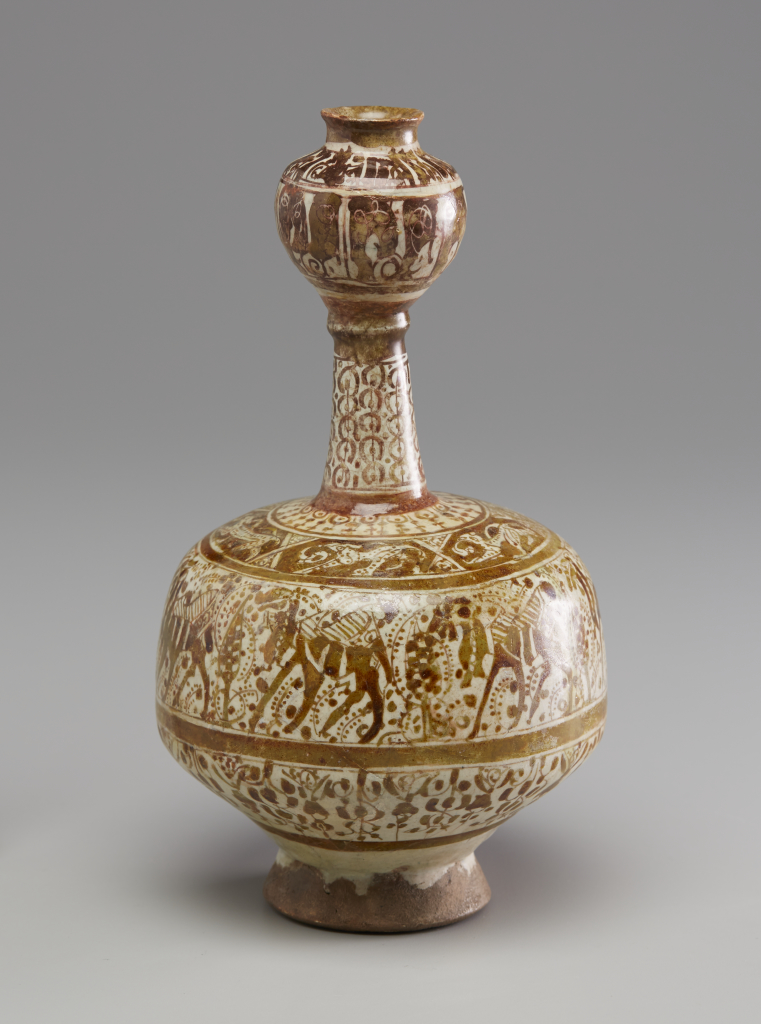
Iran, Isfahan province, Kashan, Bottle with Scene of a Camel Caravan, 13th century, stonepaste with lustre painting over opaque white glaze, Gift of M. Larry and Nancy B. Ottis, public domain, 2013.128.6
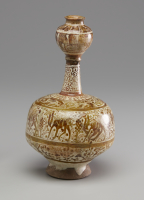
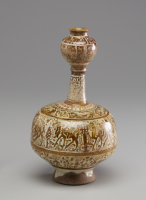
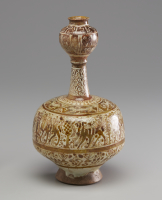
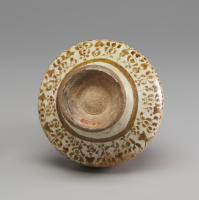
This work is not currently on view.
- Title
Bottle with Scene of a Camel Caravan
- Artist
- Date
13th century
- Period
Abbasid Caliphate (750-1258 CE)
- Medium
stonepaste with lustre painting over opaque white glaze
- Dimensions (H x W x D)
10 1/2 in x 6 in diam.
- Collection Area
Asian Art
- Category
Ceramics
Islamic Art
- Object Type
bottle
- Culture
Iranian
Islamic
- Credit Line
Gift of M. Larry and Nancy B. Ottis
- Accession Number
2013.128.6
- Copyright
public domain
- Terms
One of the most brilliant inventions of scientists at the Abbasid court in Baghdad, lustreware would transform the history of world ceramics. The technique, which is still used today, involves painting the surface of a clay vessel or tile with a mixture of clay slip, metallic oxides, and vinegar. When the clay is fired in a reducing atmosphere—one that chokes off oxygen during the firing process—the oxygen molecules burn off, producing a lustrous gold or copper-toned design. This visual alchemy, transforming clay into gold, was treasured in Islamic societies, where the use of precious metals for tableware was discouraged. The technique spread to Spain, Italy, and elsewhere in the West, where it is often known as Majolica.









